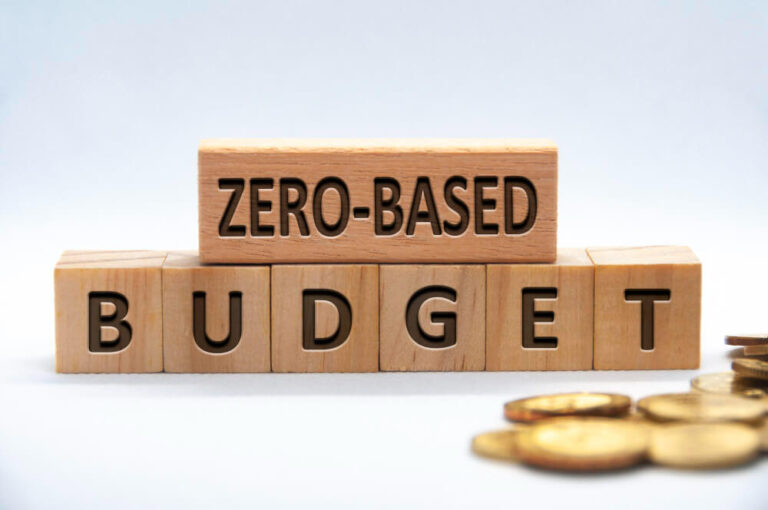Value proposition budgeting is the process of allocating financial resources to support and enhance the value proposition of a product or service. It involves identifying and prioritizing the key elements of a value proposition, such as features, benefits, and customer value, and then determining the financial investment required to deliver and communicate that value to customers.
Table of Contents
What Exactly is Value Proposition Budgeting?
Value Proposition Budgeting is a budgeting approach which is based on the value proposition of a product or service. It involves allocating resources and funds based on the value that a product or service is expected to deliver to customers. This type of budgeting requires a deep understanding of customer needs, market dynamics, and the unique benefits a product or service can offer.
In this approach, budgeting decisions are made not just based on cost, but also on the potential return on investment from the perspective of customer value. For example, if a particular feature of a product is highly valued by customers and can lead to increased sales, then more budget might be allocated for its development and improvement.
This approach aligns budgeting with strategy and customer value, making it a potentially effective tool for achieving competitive advantage and business growth. However, it can be challenging to implement due to the difficulty of accurately predicting customer value and the return on investment.
How Do You Create a Value Based Budget?
The budgeting process for value proposition typically involves the following steps:
- Identify the key elements of the value proposition: This includes understanding the unique features, benefits, and customer value that the product or service offers. This can be done through market research, customer feedback, and competitive analysis.
- Determine the financial investment required: Once the key elements of the value proposition are identified, the next step is to determine the financial resources needed to deliver and communicate that value. This can include costs such as product development, marketing and advertising, customer support, and sales efforts.
- Prioritize the budget allocation: Not all elements of the value proposition may require the same level of financial investment. It is important to prioritize the budget allocation based on the potential impact on customer value and the overall business strategy. This can be done by considering factors such as market demand, competitive landscape, and customer preferences.
- Monitor and adjust the budget: Once the budget allocation is determined, it is important to regularly monitor and adjust it based on the actual performance and results. This may involve reallocating resources to areas that are delivering the most value or making adjustments based on changes in market conditions or customer preferences.
Value proposition budgeting is a strategic process that helps organizations align their financial resources with their value proposition to maximize customer value and achieve business goals.
By effectively allocating resources to support and enhance the value proposition, organizations can differentiate themselves from competitors and build strong customer relationships.
What Are the Disadvantages of Value Proposition Budgeting?
Value proposition budgeting is a budgeting method that focuses on allocating resources based on the perceived value that a project, department, or activity will deliver to the organization. Like all budgeting methods, value proposition budgeting has its advantages and disadvantages. Here are some disadvantages of this method:
- Subjectivity in Value Assessment: One of the most significant disadvantages is the potential for subjectivity when determining the value of a project or activity. Different stakeholders may have varying opinions on what constitutes “value.”
- Difficulty in Quantifying Value: Not all value can be easily quantified or measured, especially intangible benefits. As a result, some initiatives that could bring long-term benefits might be overlooked because their value isn’t immediately evident.
- Short-term Focus: There’s a risk of focusing too much on short-term returns at the expense of long-term strategic goals. Projects with quick paybacks might be favored over others that could deliver more substantial, lasting value over time.
- Potential for Politics and Bias: There’s potential for favoritism or political maneuvering in an organization, as departments or teams vie to demonstrate their value proposition to secure funding.
- Overlooks Fixed Costs: Certain expenses might be necessary to keep the business running but may not directly contribute to a clear value proposition. These expenses can be overlooked or underfunded.
- Resource Intensive: Determining the value proposition of every activity or project can be resource-intensive. This requires significant effort in terms of research, data analysis, and stakeholder interviews.
- Possible Neglect of Essential Functions: Some fundamental aspects of an organization, like IT security or compliance, might not have a direct or evident value proposition but are essential. Using a strict value proposition budgeting approach might result in underfunding these areas.
- Resistance to Change: Employees and departments may become resistant to change, fearing that changes could diminish their perceived value.
- Can Lead to Over-Optimization: There might be an overemphasis on refining current processes to maximize value, which could lead to missing out on innovative approaches or novel solutions.
- Lack of Flexibility: Once budgets are allocated based on perceived value, it may become challenging to reallocate resources in response to changing circumstances or new opportunities.
In summary, while value proposition budgeting can provide clarity on the expected returns of investments, it’s essential to be aware of its limitations. As with all budgeting methods, it’s often beneficial to use it in combination with other approaches to create a balanced and effective budgeting strategy.
What Are the Main Advantages of Value Proposition Budgeting?
Value Proposition Budgeting (VPB) aligns resource allocation with the perceived value a particular initiative, department, or project brings to an organization. This focus on value-driven priorities offers several advantages:
- Alignment with Strategic Objectives: By focusing on the value provided to the organization, VPB ensures that budgetary decisions are directly tied to the organization’s broader goals and strategic vision.
- Clearer Decision-Making: VPB provides a concrete framework for evaluating and prioritizing competing projects or activities. When initiatives can demonstrate a clear value proposition, it becomes easier for decision-makers to justify their funding.
- Resource Optimization: By prioritizing projects that offer the most value, the organization can ensure it’s getting the best possible return on its investments, leading to a more efficient use of resources.
- Enhanced Accountability: Resources are allocated based on the promise of delivering specific value. This setup instills a culture of responsibility, where teams and departments are held accountable for realizing the value they’ve committed to delivering.
- Promotion of Innovation: To maximize their perceived value, departments or teams might be incentivized to develop innovative solutions or processes. This can foster an environment where continuous improvement and creative thinking are rewarded.
- Transparency in Allocation: With a clear focus on value propositions, stakeholders can better understand why certain projects receive funding and others don’t, leading to increased transparency and trust in the budgeting process.
- Stakeholder Engagement: Determining a project’s or activity’s value proposition often requires input from various stakeholders, which can lead to a more collaborative and inclusive budgeting process.
- Adaptability: As the environment or organization’s priorities change, the perceived value of initiatives might shift. VPB allows for flexible resource reallocation in response to these changes, making it more adaptable than some other budgeting methodologies.
- Customer-Centric Approach: Often, the value proposition is tied to customer satisfaction or fulfilling customer needs. Thus, VPB can encourage an organization to prioritize initiatives that directly benefit and resonate with its customers.
- Focus on Measurement and Data: Given that value delivery is central to this method, there’s an inherent emphasis on measuring outcomes and using data to validate the realized value of initiatives.
While Value Proposition Budgeting can provide these advantages, its success largely depends on how well it’s implemented and the organization’s ability to accurately assess and quantify value propositions.
Example of a Value Proposition Budgeting
Value proposition budgeting (VPB) is a budgeting process that allocates resources to the activities and initiatives that deliver the most value to customers and the business. It is a more strategic approach to budgeting than traditional budgeting methods, which often allocate resources based on historical spending or incremental changes.
Example:
A retail company sells a variety of products, including clothing, footwear, and home goods. The company’s value proposition is to offer customers high-quality products at competitive prices.
To create a value proposition budget, the company would first identify the activities and initiatives that are most important to delivering on its value proposition. These might include:
- Product development
- Marketing and advertising
- Customer service
- Store operations
The company would then assess the cost of each activity or initiative and the value that it delivers to customers. For example, the company might find that product development is one of its most important activities, but it is also one of its most expensive. However, the company knows that new products are essential to attracting and retaining customers.
The company would then allocate its budget to the activities and initiatives that deliver the most value to customers. This might mean allocating a larger portion of the budget to product development and marketing, and a smaller portion of the budget to store operations.
The company would also regularly review its value proposition budget to ensure that it is aligned with its overall business strategy and that it is delivering the most value to customers.
Here is a more specific example of how a retail company might use VPB to allocate its budget:
| Activity/Initiative | Cost | Value | Budget Allocation |
|---|---|---|---|
| Product development | $10 million | High | 30% |
| Marketing and advertising | $5 million | Medium | 20% |
| Customer service | $2 million | Low | 10% |
| Store operations | $3 million | Low | 10% |
In this example, the company is allocating the largest portion of its budget to product development, which it believes is the most important activity for delivering on its value proposition. The company is also allocating a significant portion of its budget to marketing and advertising, in order to reach new customers and promote its products.
The company is allocating a smaller portion of its budget to customer service and store operations, as it believes that these activities are less important to its value proposition.
VPB can be used by businesses of all sizes and in all industries. It is a particularly useful budgeting method for businesses that are focused on customer experience and that want to ensure that they are allocating their resources to the activities and initiatives that will deliver the most value to their customers.
Step-By-Step Value Proposition Budgeting
Creating a value-based budget involves aligning your spending with your personal values, ensuring that your money goes towards what truly matters most to you. Here’s a step-by-step guide on how to create a value-based budget:
- Define Your Values: Before you can create a budget based on your values, you need to know what those values are. Reflect on what matters most to you in life. Examples of values might include family, education, travel, health, charity, or financial independence. List down your top values.
- Review Your Current Spending: Go through your recent bank statements, credit card statements, and receipts. Categorize each expense. This will give you a clear picture of where your money is currently going.
- Align Spending with Values:
- For each spending category, ask yourself how well it aligns with your values. Does this expense contribute significantly to what you genuinely care about? For example, if one of your top values is health, then spending on a gym membership or wholesome food aligns with that value.
- Identify expenses that don’t align with any of your core values. These are potential areas where you might consider cutting back.
- Set Financial Goals Based on Values: Once you know your values, set financial goals that support them. For instance, if one of your values is travel, you might set a goal to save a certain amount for a vacation each year.
- Allocate Funds: Based on your values and goals, allocate funds to each category in your budget. Make sure to prioritize spending that aligns closely with your values.
- Adjust and Cut Unnecessary Expenses: Once you’ve prioritized spending that aligns with your values, review other areas where you might be overspending. Consider cutting back or eliminating expenses that don’t serve your core values or long-term goals.
- Track Your Spending: Regularly track your spending to ensure you’re staying on course. There are many apps and tools available to help you with this, or you can use traditional methods like spreadsheets or pen and paper.
- Review and Adjust Regularly: Periodically, revisit your value-based budget. As life changes, your values might shift, or you may realize certain expenditures aren’t delivering the value you expected. Adjust your budget accordingly.
- Save for the Future: Even if immediate gratification isn’t one of your core values, consider the long-term value of financial security. Allocate a portion of your budget to savings, investments, and retirement.
- Stay Flexible: Remember that budgets are tools to serve you, not rigid frameworks. There will be unexpected expenses or changes in your financial situation. The key is to ensure that, overall, your spending aligns with your values.
Creating a value-based budget requires self-reflection and honesty. By ensuring that your spending aligns with what you truly value, you can achieve greater satisfaction with your financial decisions and make your money work more effectively for you.
Differences Between Value Proposition Budgeting and Other Types of Budgeting
Value Proposition Budgeting (VPB) is a strategic approach that differs from traditional budgeting methods by focusing on funding activities that offer the most value to an organization’s customers or stakeholders. Here’s a concise comparison to other budgeting types:
- Value Proposition Budgeting (VPB):
- Focus: Directly aligns budget allocations with the value delivered to customers.
- Decision Criteria: Investments are made based on their potential to enhance the value proposition.
- Flexibility: Often more dynamic, allowing for shifts in spending to adapt to changing customer needs.
- Zero-Based Budgeting (ZBB):
- Focus: Starts from a “zero base” every period, with all expenses needing justification.
- Decision Criteria: Cost-effectiveness and necessity, rather than value delivery.
- Flexibility: Can be rigid, as it requires justification for all expenses, not just new ones.
- Incremental Budgeting:
- Focus: Takes last year’s budget as a base and makes incremental adjustments.
- Decision Criteria: Historical spending patterns, with adjustments for inflation or expected changes.
- Flexibility: Often less flexible due to its reliance on past data.
- Activity-Based Budgeting (ABB):
- Focus: Allocates funds based on activities and the cost drivers of those activities.
- Decision Criteria: The cost of performing activities, irrespective of the value provided.
- Flexibility: More flexible as it relates to activity levels, but not necessarily to value delivery.
- Priority-Based Budgeting:
- Focus: Aligns resources with the organization’s strategic objectives by prioritizing initiatives.
- Decision Criteria: How well initiatives support strategic priorities.
- Flexibility: More strategic flexibility but does not necessarily focus on customer value.
- Outcome-Based Budgeting:
- Focus: Links expenditures to outcomes rather than just activities or outputs.
- Decision Criteria: Desired outcomes and the effectiveness of expenditures in achieving them.
- Flexibility: Can be flexible if outcomes are clearly defined and aligned with strategic goals.
Value Proposition Budgeting stands out by prioritizing expenditures that directly enhance the customer’s experience or add value to the product or service, making it particularly suited for customer-centric organizations.
Each budgeting type has its unique strengths and applications, and the choice of which to use depends on the specific needs and strategic goals of the organization.
FAQ
What is the value proposition method of budgeting?
Value proposition budgeting, or priority-based budgeting, involves examining and assessing the cost-effectiveness of every item in your budget. It’s all about making sure your spending aligns with your profit goals.
What are the advantages and disadvantages of value proposition budgeting?
Advantages of Value Proposition Budgeting:
– Focus on value: This method forces businesses to explicitly define and quantify the value each expense adds, leading to increased efficiency and cost-effectiveness.
– Improved spending alignment: By prioritizing activities based on their value contribution, budgets become better aligned with strategic goals and objectives.
– Resource optimization: It helps identify and eliminate wasteful spending, freeing up resources for critical investments and innovation.
– Cost reduction: By eliminating low-value expenses and optimizing the rest, value proposition budgeting can lead to significant cost savings.
– Enhanced agility: Businesses become more responsive to changing market conditions because they can easily adjust spending based on value priorities.
– Boosted ROI: Investments become more targeted, leading to a higher return on investment.
– Increased transparency: The process fosters communication and collaboration between departments, leading to greater transparency in financial decision-making.
– Improved customer experience: Focusing on value often leads to better products and services, resulting in happier customers.
Disadvantages of Value Proposition Budgeting:
– Subjectivity and difficulty in quantifying value: Not all expenses can be easily measured in monetary terms, which can make it challenging to assess their true value.
– Time-consuming: Implementing and maintaining a value proposition budgeting system can require significant time and effort, especially in large organizations.
– Data dependence: The results are only as good as the data used. Inaccurate or incomplete data can lead to misleading conclusions.
– Need for constant re-evaluation: Value constantly changes due to market dynamics and business priorities, requiring frequent re-assessment of the budget.
– Potentially overlooks future opportunities: Focusing solely on existing expenses can lead to the neglect of new or innovative projects with high potential value.
– Internal resistance: Shifting from traditional budgeting methods to a value-based approach can face resistance from employees accustomed to the old system.








